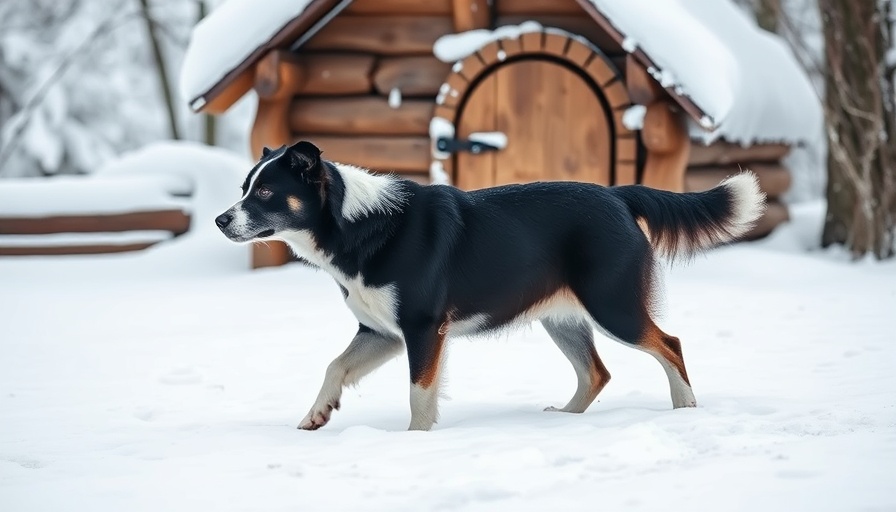
Understanding Your Dog's Needs During Winter
The winter months can be tough for our four-legged friends, especially for those who spend time outdoors. It's essential to understand that not all dogs tolerate cold weather in the same way. Breeds like Alaskan Malamutes and Siberian Huskies are equipped for the chill, whereas Chihuahuas and Greyhounds struggle. Paying close attention to how your dog reacts to the cold will guide your efforts in keeping them comfortable and safe.
How to Choose the Right Dog House Insulation
To ensure your dog is warm and safe in an outdoor dog house, insulation is critical. A suitable dog house should be well-ventilated yet keep out drafts. An elevated floor, at least four inches above ground, helps to insulate against the cold ground. Consider insulating the walls with materials such as straw or foam board, which can provide excellent heat retention. Use straw as a bedding material, as it creates a warm barrier to prevent cold air from seeping in.
Essential Items to Keep Your Dog Warm
When thinking about what to put in an outside dog house for warmth, there are several items to consider. Adding a bedding layer of straw acts as insulation while providing a soft sleeping area. You can also utilize old blankets or dog beds specifically designed for warmth. Another helpful tip is to create a 'thermal' barrier by placing straw in a box or storage bin within the dog house for additional comfort and warmth.
Clothing Considerations for Your Pets
Just as we bundle up in winter gear, your dogs may require some extra help staying warm. For smaller breeds, a winter coat or sweater can drastically improve their comfort levels in cold weather. Boots can also protect their paws from frostbite and harmful chemicals on the ground. Knowing that dogs, like humans, can feel the cold allows you to make thoughtful decisions ahead of any outdoor time.
Creating a Warm Environment Inside and Outside
Beyond their dog house, it’s important to ensure your pet has access to warm spots in the house as well. Create warming stations with blankets and cozy beds. Simply placing some soft furnishings around can encourage them to warm up when they come indoors. Avoid heating devices such as space heaters that could be hazardous if knocked over. Dogs, by nature, enjoy their warm spots, and it’s crucial to provide safe alternatives.
Daily Routine: Timing Outdoor Visits
When temperatures plummet, adjusting your dog’s routine is necessary. Limit their outdoor time during extreme cold to quick bathroom breaks and a brisk walk around the block. If it's particularly bitter outside, opt for shorter trips to prevent any chill-related issues. Always keep an eye on your dog for signs of discomfort or distress.
Safety First: Keeping Your Dog Leashed
In winter conditions, keeping your dog on a leash is non-negotiable. Snowstorms can quickly turn familiar paths into disorienting landscapes. A leash ensures your pet doesn’t wander off and puts themselves at risk. This is especially relevant in urban areas where hidden hazards like icy sidewalks or unpredictable drivers can be dangerous, making winter walks even riskier.
Frequently Asked Questions About Dog Care in Winter
Q: How can I tell if my dog is too cold?
A: Shivering, whining, or seeking warmth by burrowing are immediate signs your dog is feeling the chilly temperatures.
Q: Is it safe to leave my dog outside in the cold?
A: It depends on the breed and their acclimatization to cold weather. Always monitor their behavior and limit their time outside during severe cold spells.
Concluding Thoughts: A Happy, Warm Dog This Winter
Taking the time to understand your dog’s needs during winter can make all the difference in their comfort and safety. By following these precautions and tips on what to put in an outside dog house for warmth, you'll be making a conscious effort to enhance their well-being and happiness in the cold months ahead.
 Add Row
Add Row  Add
Add 




Write A Comment